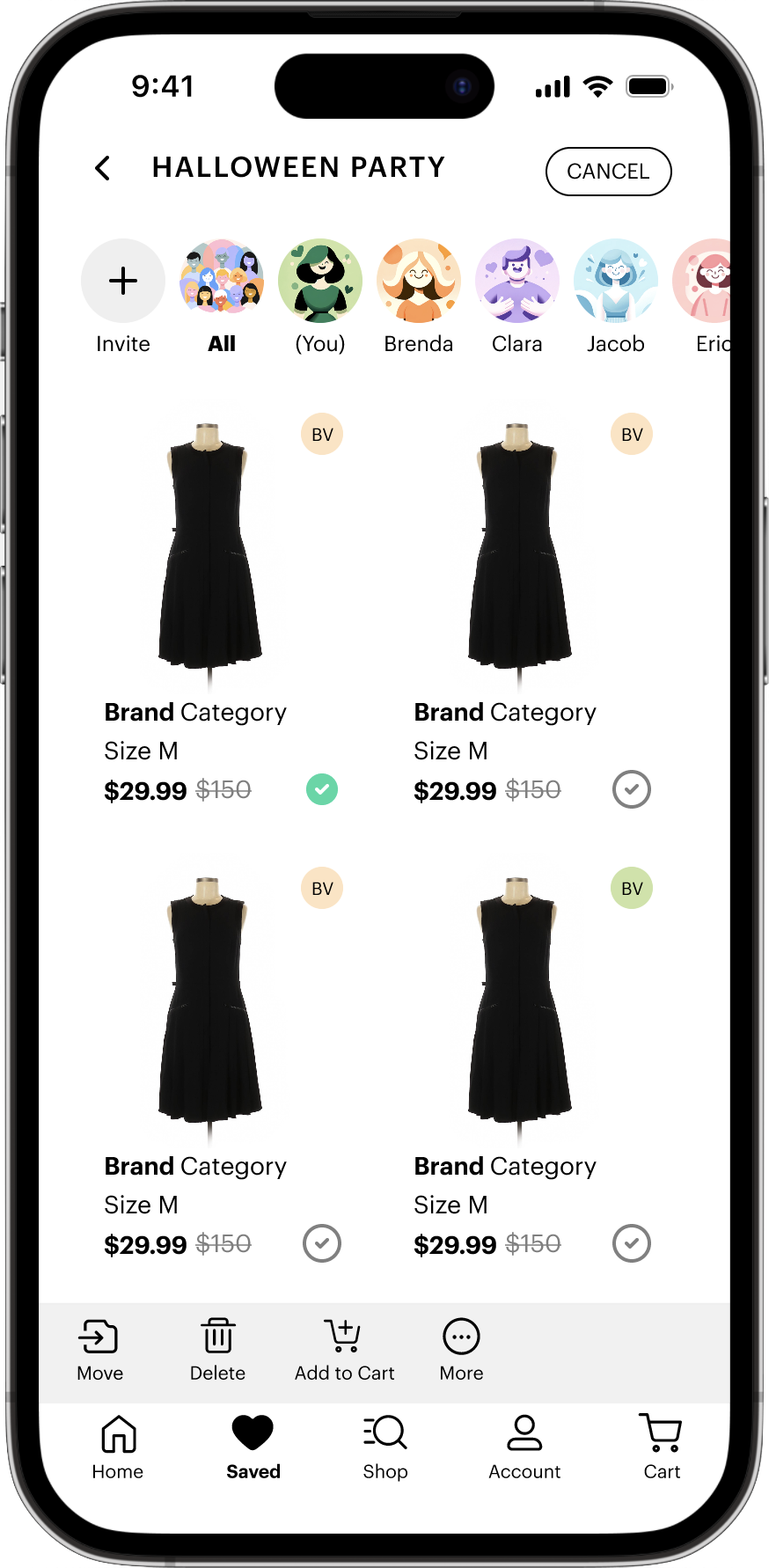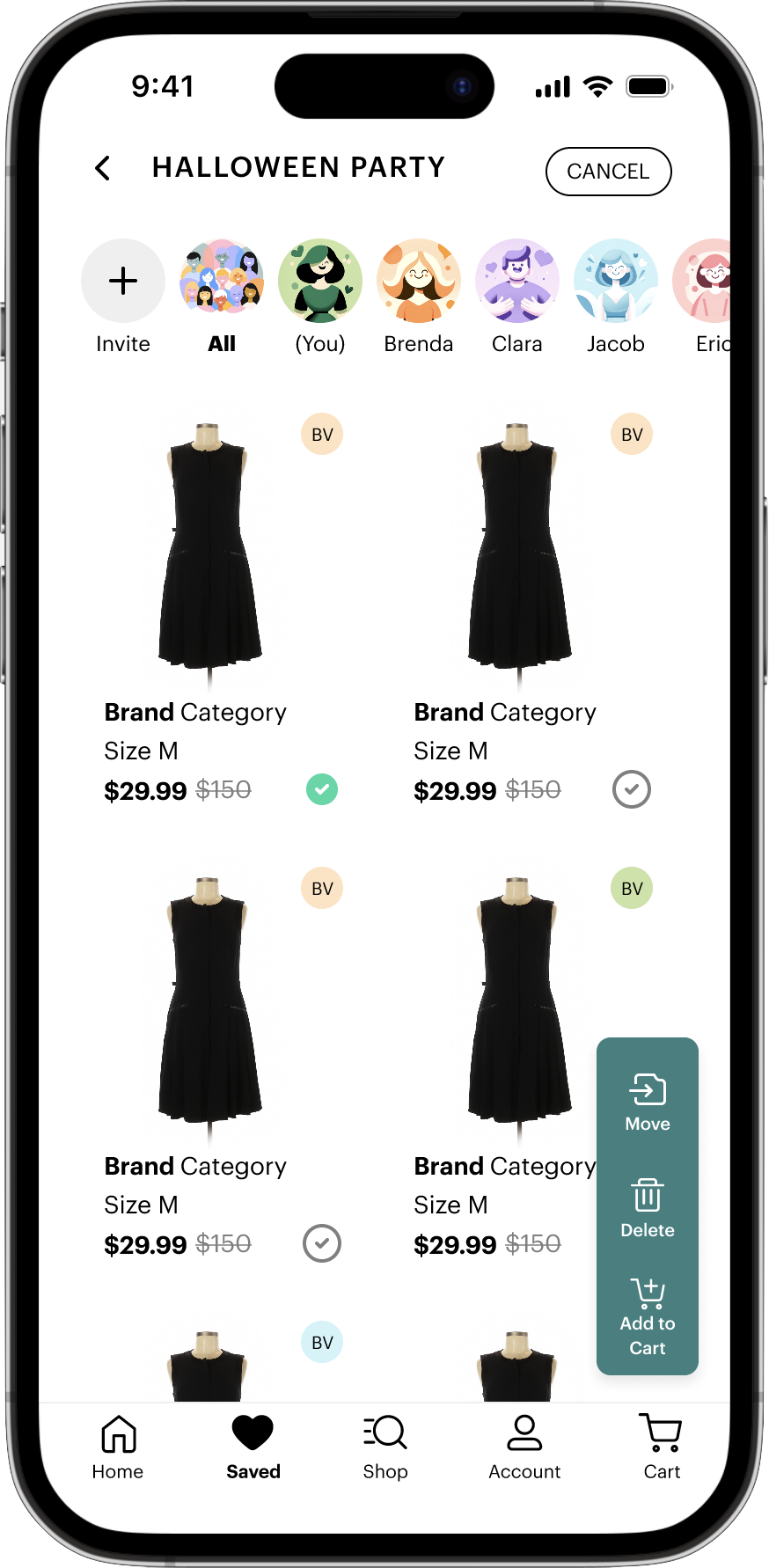User Flow
Collaborative Collection feature allows users to create shared collections with friends or family, where they can add, remove, or comment on items together in real-time. This feature aims to bring the social and leisure aspects of in-person shopping to the online platform, aiding in alleviating indecisiveness by allowing for immediate feedback and interaction.

Testing & Iteration: Conversion
Testing highlighted the user's need for organizing items into various wishlists. In discussions with the product management and operations teams, the emphasis was placed on enhancing the conversion from social engagement to actual order placements. Consequently, we focused on integrating multiple features to offer users greater editing flexibility within their wishlists.

Before

After

Horizontal tool bar overlaps over bottom navigation bar, leading to confusion and user error

User sometime restricted by only being able to interact with their own item. Allowing greater flexibility is needed for a more streamlined approach

A need efficient / one lick transition from wishlist curation to the ordering process, aligning with business objectives
Testing & Iteration: Social Interaction
Casual and lightweight social interactions are fundamental to the appeal of offline thrifting, offering a sense of community and connection. In translating this experience online, it's essential to embed similar social dynamics into the UX. By incorporating features that facilitate easy, informal interactions, we can recreate the sense of camaraderie and reassurance that drives engagement in the physical thrifting space, thereby enhancing the overall experience in online thrift shopping

The binary nature of the thumbs up/thumbs down system may not accurately reflect user sentiments, leading to misinterpretations and reduced engagement due to its limited expressiveness

Over-reliance on this over-simplified feedback mechanism could discourage nuanced user interactions, undermining a rich, engaging experience

The presentation of social interactions lacks optimization for user gratification, diminishing its effectiveness in providing the reassurance essential for a vibrant online community

Predominant use of the thumbs up reaction results in a monotonous interaction pattern, limiting expressive communication among users




.png)

































.png)

.png)



